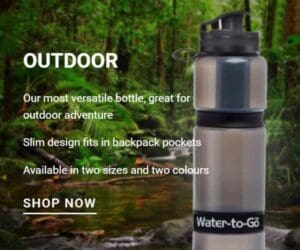Trousers Point Flinders Island is a 5km, grade 2 hike located in Strzelecki National Park, Tasmania. The hike should take around 1.75 hours to complete.
Hike overview
Flinders Island is rich with breath-taking scenery. Take a weekend or, better still, a whole week to visit and enjoy the beaches, walks and wildlife. The Trousers Point walk, within the Strzelecki National Park includes unusual rock features, views to off-shore islands and two beautiful beaches.
Highlights
The rocky granite headland of Trousers Point is overlaid with Quaternary sands forming coastal beaches, dunes, ridges and flats. Granite boulders protrude through the shallow sandy soil and along the coastline.
There are also other areas with significant geoheritage values within the park, including coastal karst landforms at Fotheringate Bay and broad shore platforms (up to fifty metres) with solution pans, sea stacks, caves formed by emerging groundwater, marine erosion and alveolar weathering of cliffs.
Route and GPX file
Max elevation: 26 m
Min elevation: 8 m
Total climbing: 108 m
Total descent: -108 m
For more information about this hiking trail please visit Parks and Wildlife Service Tasmania
Tips
Park entry fees apply and can be paid at Service Tasmania in Whitemark. Annual pass holders should bring their 'Annual all parks card' to Flinders Island.
Toilets, drinking water (tank), gas barbecues, campsites (un-powered) at Trousers Point. Picnic tables at Fotheringate Beach.
Short rocky sections that may be slippery when wet.
Supervise children, unpatrolled beached, unprotected track edges.
No pets, firearms or bicycles.
Trail location
Sorry, no records were found. Please adjust your search criteria and try again.
Sorry, unable to load the Maps API.
Getting there
From the main town of Whitemark, travel south (towards Lady Barron) on road B85. Turn into road C806 to Trousers Point. The walk starts 16km from Whitemark.
Gallery
If you have any photos from this hike and are happy to share them, please upload your .jpg files here.
Please note: Uploading photos does not transfer ownership of copyright away from you. If requested, you will be credited for any photos you provide and can ask they be deleted at any time.
Similar trails nearby
Explore Safe
While planning your hike, it’s important to check official government sources for updated information, temporary closures and trail access requirements. Before hitting the trail, check local weather and bushfire advice for planned burns and bushfire warnings and let someone know before you go. Plan ahead and hike safely.
Let someone know
Adventure with peace of mind: Fill out your trip intentions form. Before you hit the trail, fill out an online form to privately send important details about your hike to your family or friends. If you don’t return on time, they can easily alert emergency services, preventing worry and ensuring a swift response. Hike with peace of mind and enjoy your outdoor adventure to the fullest. Be smart, be safe: Register your plans here.
Gear to consider

My free planning, food and packing checklists provide an introduction to things your could consider (as well as the Ten Essentials) on your day, overnight and multi-day adventures. Customise your kit according to your personal needs, always considering safety first.
Suggest an edit
Does this hikes information need updating? Sometimes the route, trail features or access conditions change.
Acknowledgement of Country
Trail Hiking Australia acknowledges the Traditional Owners of the lands on which we hike and pay respects to their Elders, past and present, and we acknowledge the First Nations people of other communities who may be here today.
















